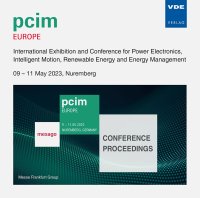Measurement Methods for Water Uptake of Encapsulation Materials in Power Electronics
Conference: PCIM Europe 2023 - International Exhibition and Conference for Power Electronics, Intelligent Motion, Renewable Energy and Energy Management
05/09/2023 - 05/11/2023 at Nürnberg, Germany
doi:10.30420/566091217
Proceedings: PCIM Europe 2023
Pages: 5Language: englishTyp: PDF
Authors:
Gierth, Paul; Rebenklau, Lars; Gierth, Uta; Schneider, Michael (Fraunhofer Institute for Ceramic Technologies and Systems IKTS, Germany)
Abstract:
The future of mobility focusses on electric engines and their implementation in modern vehicles. Therefore, different energy storage systems, new engine concepts and innovative electronic solutions needs to be developed and characterized. Especially the usage of wide bandgap semiconductors, offers an increasing efficiency potential. Such kind of GaN or SiC semiconductors are working at high temperatures, frequencies and rising voltage levels up to 1000 V. Therefore, suitable electrical insulations are strictly necessary, thus will open new material challenges. Currently insulation is realized by embedding the semiconductors in electronic boards (PCB, ceramics) or cover them with polymers. Polymer cover-ing is the state-of-the-art and mainly transferred from common silicon electronics. These materials must withstand higher electrical fields under harshest environmental conditions. Especially, the influence of humidity on polymers and consequently the water uptake is a critical parameter for the protection of metal substrates, in case of corrosion inhibition. A better understanding of the degradation mechanisms and the implementation of state of health analyses is required. Only in this way, further miniaturized technical solutions with sufficient long-term stability can be developed. This work focusing on demonstration and discussion of suitable measurement methods to determine the water uptake of such polymers. Electrochemical Impedance Spectroscopy (EIS) was used on lab scale level. Degradation models were derived from these results and development possibilities for inline measurement methods were discussed.


